Page Miss Glory

Brief Synopsis
Cast & Crew
Mervyn Leroy
Marion Davies
Pat O'brien
Dick Powell
Mary Astor
Frank Mchugh
Film Details
Technical Specs

Synopsis
Finding themselves short of funds, Click Wiley, Ed Olson and his girl friend Gladys concoct a composite photo of the most beautiful women in Hollywood in order to win a beauty contest and its cash prize. The photo of the woman, whom they name Dawn Glory, wins, and for a while, despite pressure from reporters and advertisers, they are able to keep up the pretense that she exists. Stunt pilot Bingo Nelson falls in love with Dawn Glory's photograph and proposes marriage from his airplane. Meanwhile, the hotel chambermaid, country girl Loretta, has fallen in love with Bingo's picture, so when Click needs a real voice to answer Bingo's proposal over the air, she is willing to provide it. Slattery, a persistent reporter, discovers Click's confidence man background and threatens to tell everyone if he doesn't produce Dawn in person. In desperation, Click tells him the truth, that there is no Dawn Glory, but Slattery does not believe him. Click is in trouble until Gladys finds that Loretta has tried on the dress designed especially for Dawn. With her new hairdo, Loretta looks just like the photograph, so Click convinces her to impersonate Dawn for the advertisers, and they all become rich. Loretta is unhappy, however, because Click keeps her away from Bingo for fear that he will discover the truth. Click tries to have Bingo kidnapped, but Loretta asks her former fellow maid to bring him to her apartment. Bingo asks her to elope with him, and she agrees after telling him that she is not Dawn Glory. Before they can leave, the kidnappers break into the apartment and kidnap Loretta, but Bingo rescues her and they fly over town together announcing their engagement.

Director

Mervyn Leroy
Cast

Marion Davies
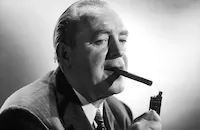
Pat O'brien

Dick Powell

Mary Astor
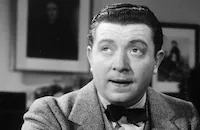
Frank Mchugh

Lyle Talbot

Allen Jenkins
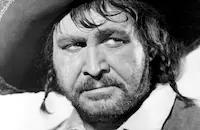
Barton Maclane
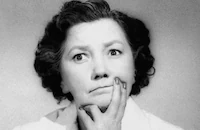
Patsy Kelly
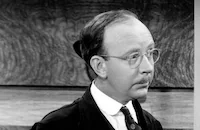
Hobart Cavanaugh

Joseph Cawthorn
Al Shean
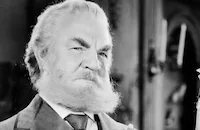
Berton Churchill
Helen Lowell
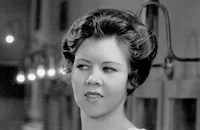
Mary Treen
Harry Beresford

Gavin Gordon

Lionel Stander

Joseph Crehan
Jack Mulhall
Oscar Apfel
Gayne Whitman
Paul De Rincon
Crew

Film Details
Technical Specs

Articles
Page Miss Glory
Davies made all her films through Hearst's Cosmopolitan Pictures, which for most of her career were produced and released through MGM. Although not ambitious for herself, Davies had a strong desire to please her mentor, who was increasingly dissatisfied with what he perceived as the studio's failure to treat his star as a star. In particular, he was miffed that two roles he had wanted for Davies, Elizabeth Barrett Browning in The Barretts of Wimple Street (1934) and Marie Antoinette (1938), had been given instead to Norma Shearer, whose husband, Irving G. Thalberg, was the studio's head of production. When they lost the latter role, he entered negotiations with Warner Bros. and, in 1935, moved his Cosmopolitan Pictures from MGM's Culver City lot to Warners' Burbank location.
This was an important move for Warner Bros. Although most of Davies' films barely broke even, primarily because of the extravagance with which they were produced, her presence guaranteed the studio preferential treatment in Hearst's papers, a big help in drawing Depression-weary audiences into movie theatres. But those benefits hardly came cost-free. When Davies refused to leave her personal bungalow behind, they had to have her two-story structure transported across town from MGM. This required breaking it into three parts, loading each part on a truck, and driving through Los Angeles' busy streets at five miles an hour. When one of the pieces fell off its truck, it stood on its side, blocking traffic, for hours as passersby snuck in to see how the other half lived. Once the thing had been delivered and reassembled, studio head Jack Warner had two rooms added to it and gave Davies a silver Rolls-Royce just to keep her happy.
There was one thing nobody would give her, however. During filming she developed a crush on the picture's juvenile star, Dick Powell. Although he was single at the time, Powell didn't want to risk Hearst's considerable ire for having an affair with his mistress. And Director Mervyn LeRoy did everything he could to keep them apart, then realized that Powell himself was too scared to take advantage of the situation. He barely said a word to his co-star off the set.
Needless to say, Davies felt lonely and alienated on the new lot at first. She had left most of her friends behind at MGM, though Warners borrowed cinematographer George Folsey, who knew how to shoot the aging star at her best, for this and her next film, Hearts Divided (1936). There was little problem, however, making the transition from Adrian's trend-setting designs at Metro to her new costumer, the equally gifted Orry-Kelly. Before long, Davies had bonded with her female co-stars, Mary Astor and Patsy Kelly. Most days she invited them to her bungalow for "girl talk," which consisted mainly of gossip and free-flowing champagne. Often during the shoot, LeRoy had to release the company early when the three ladies succumbed to fits of alcohol-induced giggling. There was a downside to their playfulness, of course. All three ladies would suffer from alcoholism in later years, with Kelly's and Astor's careers sidelined as a result.
None of the publicity generated by Davies' move to Warner's translated into much at the box office. Despite some positive reviews, even from papers Hearst didn't own, there weren't enough Davies fans to off-set the costly production. Within three years, as each of her Warners films continued to under perform, Davies would retire from the screen to devote herself fulltime to drinking and tending to Hearst's needs.
Producer: Marion Davies (uncredited)
Director: Mervyn LeRoy
Screenplay: Delmer Daves, Robert Lord
Based on the Play by Joseph Schrank & Phillip Dunning
Cinematography: George J. Folsey
Art Direction: Robert M. Haas
Music: Leo F. Forbstein
Cast: Marion Davies (Loretta Dalrymple/"Dawn Glory"), Pat O'Brien (Dan "Click" Wiley), Dick Powell (Bingo Nelson), Mary Astor (Gladys Russell), Frank McHugh (Ed Olson), Lyle Talbot (Slattery of the Express), Patsy Kelly (Betty), Allen Jenkins (Petey), Barton MacLane (Blackie), Hobart Cavanaugh (Joe Bonner), Lionel Stander (Nick Papadopolis), Mary Treen (Beauty Operator), Irving Bacon (Waiter), John Quillan (Bellboy).
BW-93m. Closed captioning.
by Frank Miller

Page Miss Glory
Quotes
Trivia
The original play opened in New York on 27 November 1934.
Notes
Actor Barton MacLane's surname was misspelled "McLane" in the onscreen credits. Contemporary sources note that Page Miss Glory was Cosmopolitan's first production for Warner Bros. release after the company left M-G-M. As noted in the New York Times review, the film also marked Marion Davies' return to the screen after an extended hiatus. Daily Variety noted that Paul de Rincon was a French tennis champ whom Mervyn LeRoy met on his recent around the world tour and that Gayne Whitman was a local radio player. According to Variety, the West Coast preview was 75 minutes as opposed to the 93 minutes it ran in its Broadway showing. According to a news item in Daily Variety, Warner Bros. denied that William Randolph Hearst had demanded the play be shelved. The studio bought the play for Davies for $72,500. According to modern sources, Frank Borzage was originally scheduled to direct this film.















